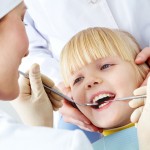
The aim of this study was to compare the efficacy of articaine 4% with 1:100 000 adrenaline and lignocaine 2% with 1:80 000 adrenaline, delivered either as an inferior alveolar nerve block (IANB) or buccal infiltration (BI) for routine restorative procedures in mandibular posterior teeth among children.
What did they do
Children in need of non-urgent or non-emergency restorative treatment under a local anaesthetic (LA) on contralateral teeth in the mandibular posterior region were enrolled in a parallel group, split-mouth randomized controlled trial. Children requiring treatment on teeth with enamel hypomineralization were excluded. Children were randomised to LA technique (IANB or BI) and then to LA type (lignocaine or articaine) using a two-stage computer generated random permuted block. Clinical staff and the patients were blind to the anaesthetic agent but not the LA technique.
Success of local analgesia was determined by the clinician using usual clinic-based methods this included patient responses to soft tissue testing and patient report of pain during the procedure. Children’s self report of pain was assessed with the Faces Pain Scale–Revised. The dental assistant also recorded the behaviour of the child and rated the level of pain displayed using the Children’s Hospital of Eastern Ontario Pain Scale (CHEOPS) during anaesthetic administration and dental treatment. Post operative follow-up information was obtained at 2-, 4-, 24-hours and one week after local anaesthetic administration.
What did they find
- Fifty-seven children were recruited into the study; 29 allocated to IANB. 28 to BI.
- Analgesia success for IANB 100%; BI 67%; p < 0.001.
- Analgesia success for BI with articaine 71%; lignocaine 64%, p > 0.05.
- Analgesia success was associated with fewer reports of painful dental treatment, p = 0.005.
They concluded
There was higher success and less painful treatment with IANB. While the findings suggest a higher proportion of LA success with BI using articaine than lignocaine, the difference was not statistically significant and neither agent can be recommended for routine clinical use via BI in restoring posterior mandibular teeth among children.
Comment
The original power calculation for this study a much larger sample size for each arm of the study. However following a planned interim analysis the data and safety monitoring committee concluded the study early because of
- the lack of difference in effectiveness between articaine and lignocaine when LA was administered via BI;
- the higher success achieved with IANB compared with BI;
- the higher report of pain for dental treatment when LA was judged to be unsuccessful but no significant difference in report of pain experienced during LA administration with either technique;
- there was no statistically significant difference between articaine and lignocaine using either LA technique.
Links
Arrow, P. (2012), A comparison of articaine 4% and lignocaine 2% in block and infiltration analgesia in children. Australian Dental Journal. doi: 10.1111/j.1834-7819.2012.01699.x

[…] […]
[…] Articaine had slightly better local anaesthesia success than lignocaine when used as buccal infiltra… […]